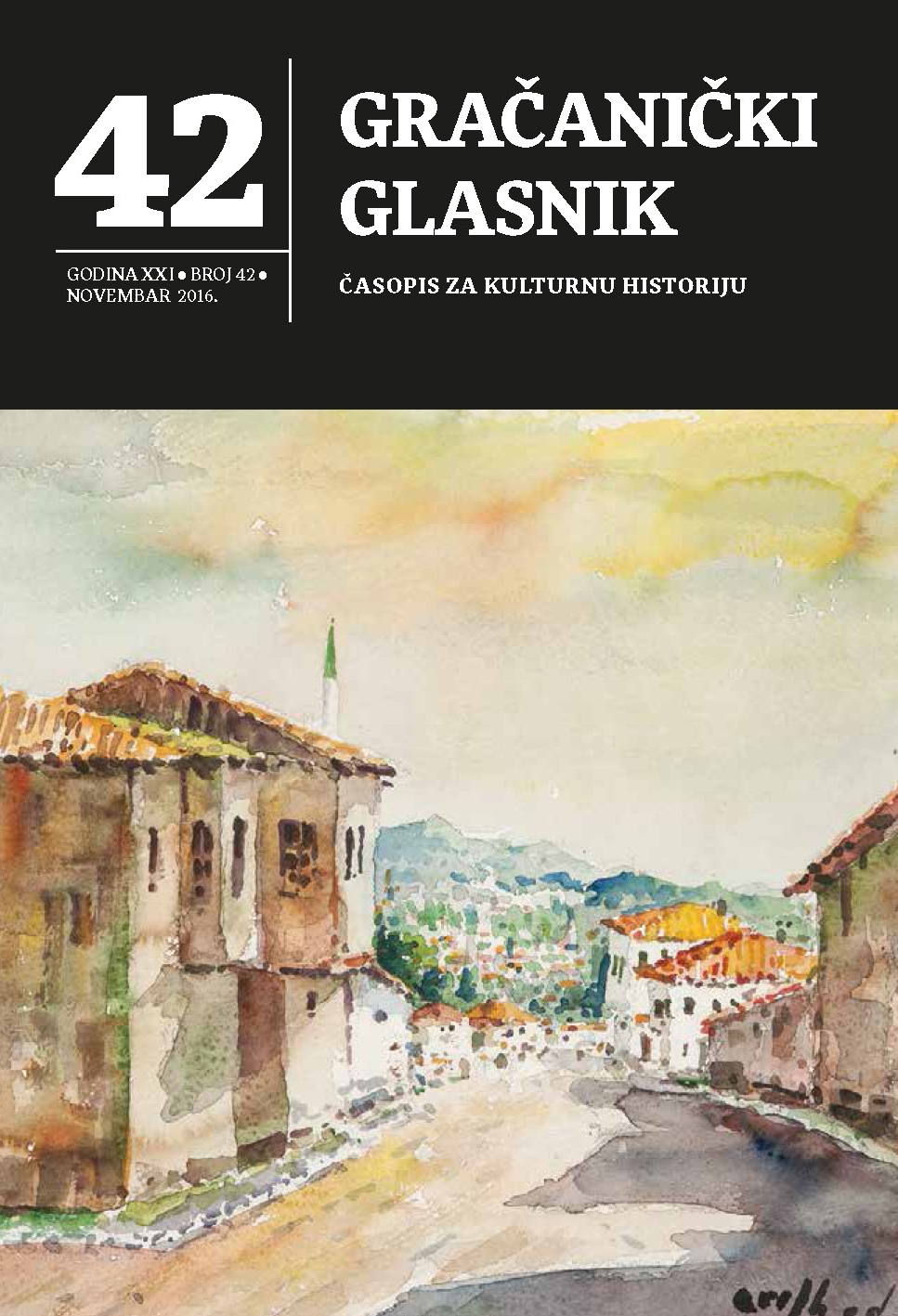Mahala Lipa u Gračanici (historijsko-etnografske bilješke)
The Lipa Mahala in Gračanica (historical and ethnographic notes)
Author(s): Rusmir Djedović, Edin ŠakovićSubject(s): History, Education, Cultural history, Ethnohistory, Islam studies, Cultural Anthropology / Ethnology, 19th Century, The Ottoman Empire
Published by: Izdavačka kuća »Monos« d.o.o
Keywords: Mahalle; neighborhood; Lipa; Gračanica; Hadži Džafer; antiques; houses; families; origins; mosque; maktab; Mula Dedo’s grave; cemeteries; springs; waqf;
Summary/Abstract: In this article, the authors studied Lipa mahala (mahalle, neighborhood), one of the traditional urban complexes in the town of Gracanica. Lipa is spread in the southwestern part of Gracanica, on mild slopes. It is assumed that arose quite early, even in the 17th century, although its present name dates back to the 19th century, from the old linden tree that was a cult site. Older name was Hadži Džafer mahala, from the eponymous mosque. The paper presents data on homes and families from the late 19th century, and their origin, and also the most significant urban amenities, antiquities and monuments: the Hadži Džafer mosque, the site of Tećište – locality of the former Tekke, the cult place Mula Dedo’s grave etc.
Journal: Gračanički glasnik - Časopis za kulturnu historiju
- Issue Year: 2016
- Issue No: 42
- Page Range: 119-148
- Page Count: 30
- Language: Bosnian

